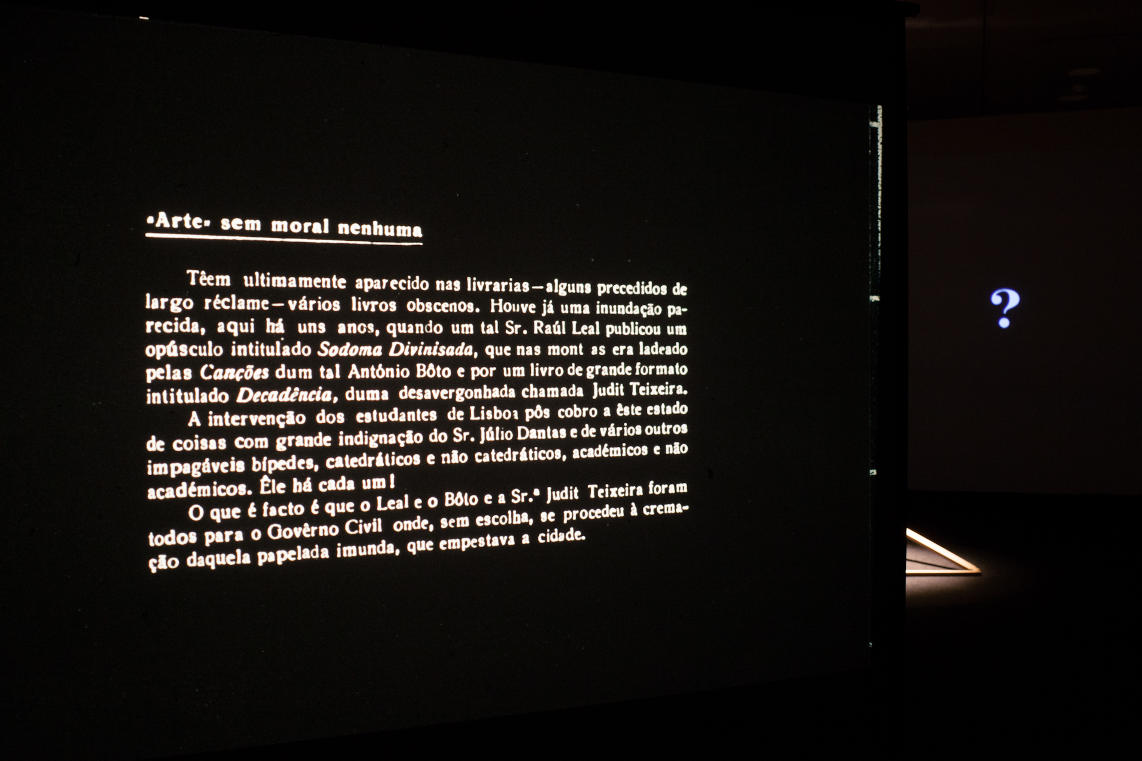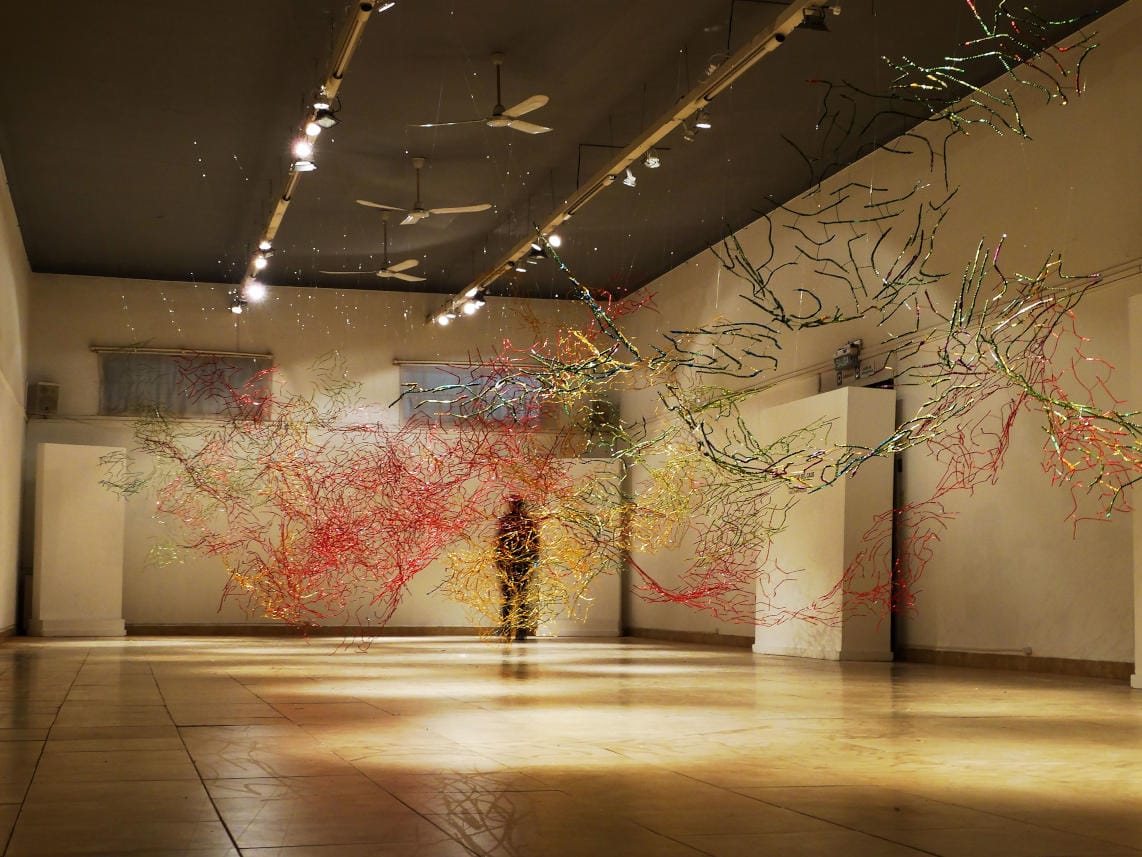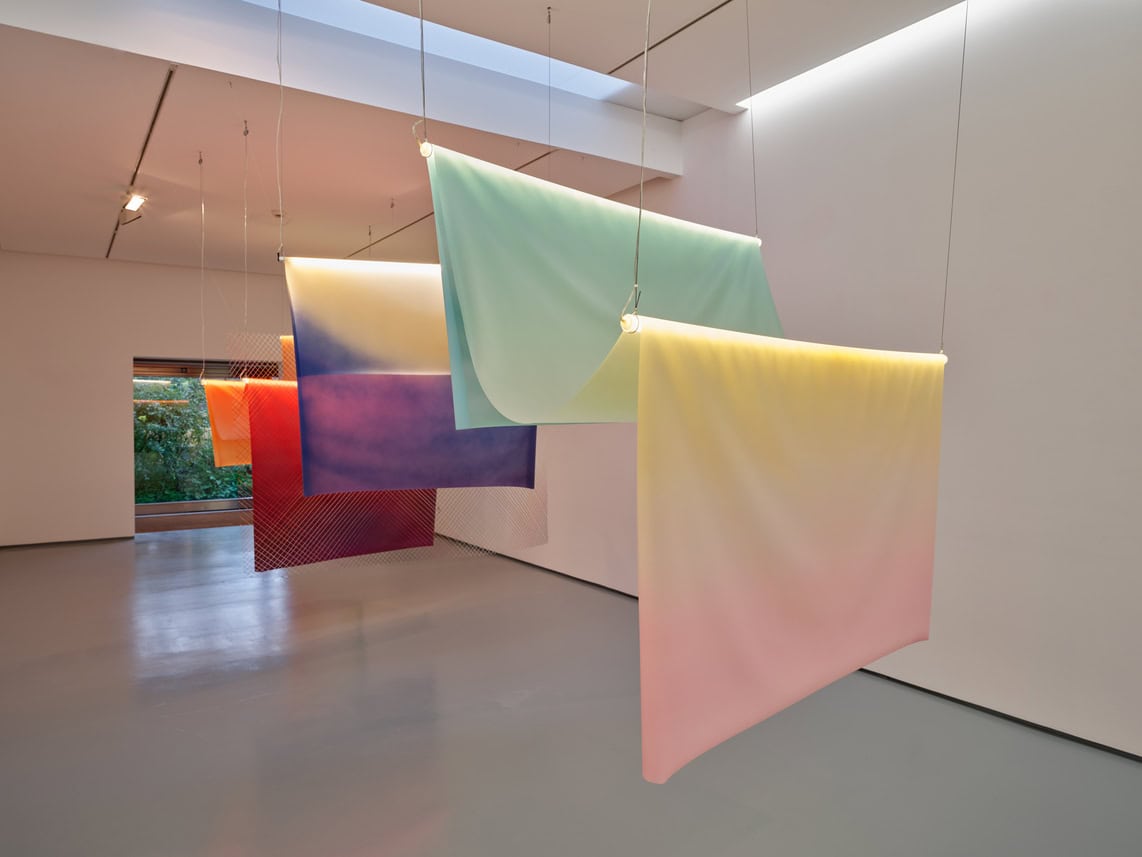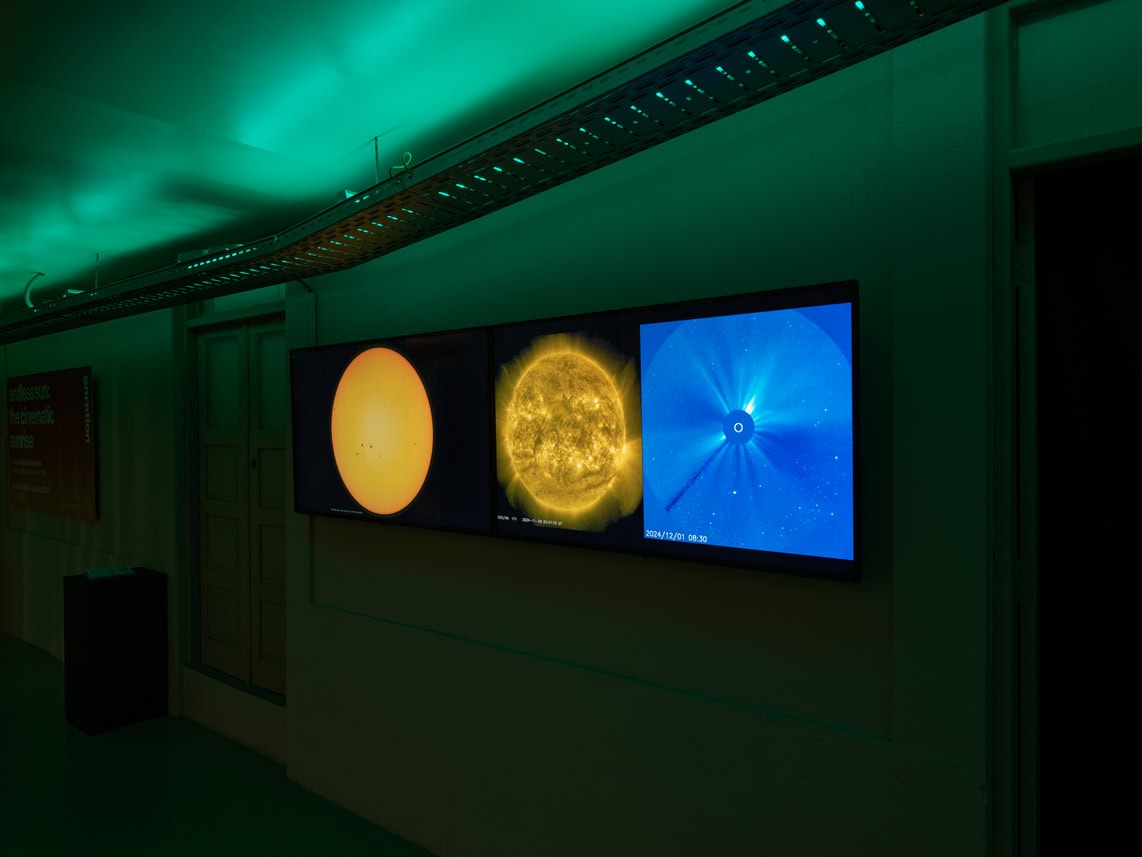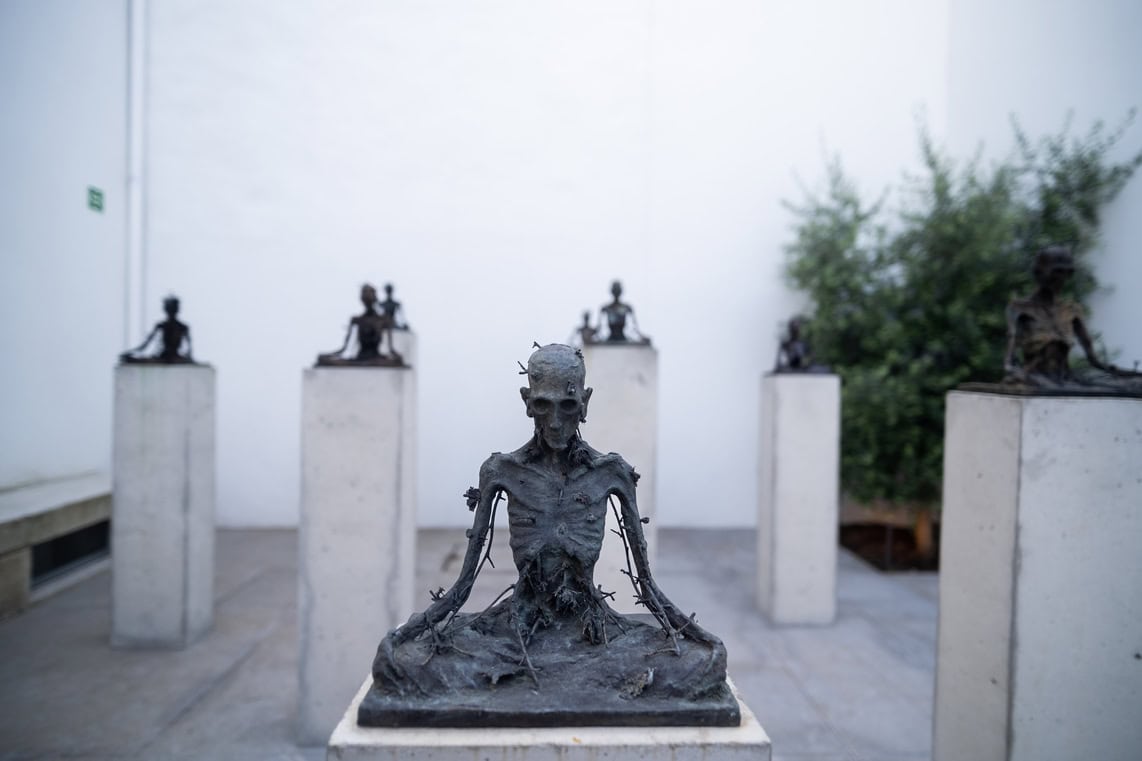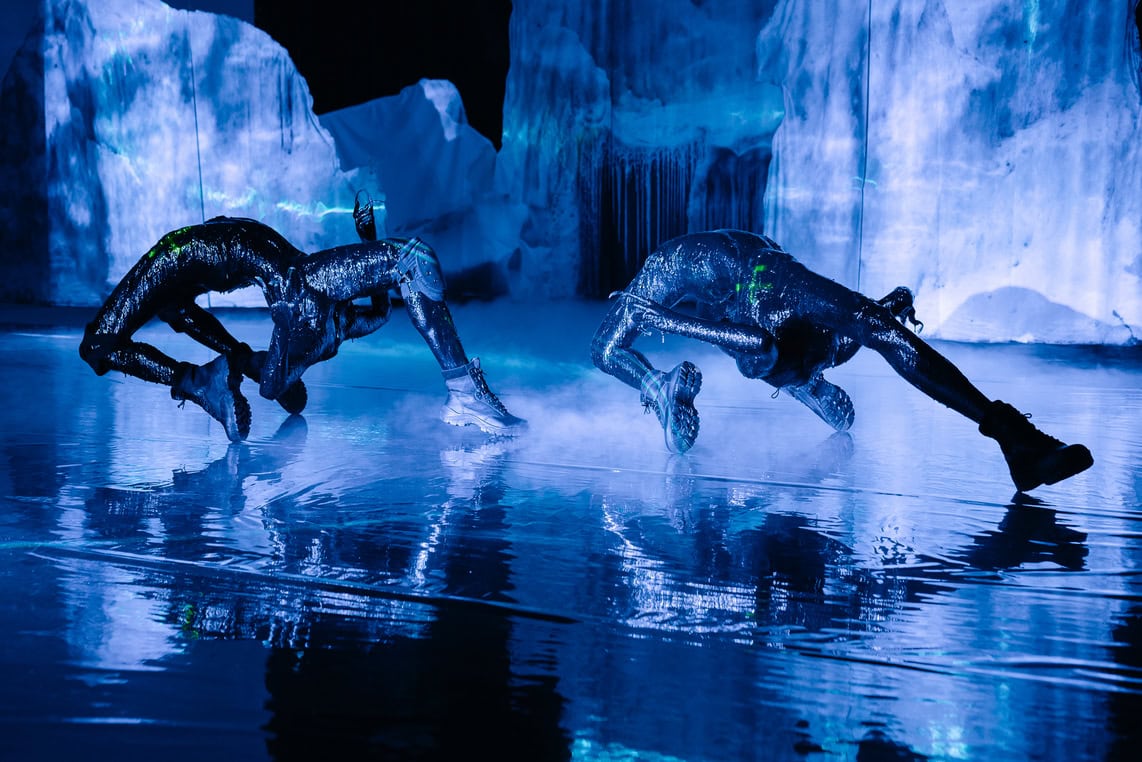Apesar de não estar, estou muito is a solo exhibition of Diogo Jesus, curated by João Ribas, at the Galeria Municipal do Porto, until August 16, 2020. It brings together the artist’s vast production, from the time when he was sixteen (2007) to the present day.
Drawings, texts, comics, music, fanzines, posters, photographs, videos, sketchbooks and much more. Cathartic expressions of the author, under several pseudonyms, like Rudolfo, DJ Nobita or M. Ryle. The chaotic, obsessive and autobiographical universe of Diogo Jesus is scattered throughout the exhibition, where we find common points in references to pop culture, the internet, videogames, cartoons, music gigs and an ironic existential venturing, in a markedly contemporary gesture and a careful look before a certain reality of the city of Oporto. According to the exhibition text: “In his drawings and comics, people, mutants, aliens and everything else is an incessant commentary on issues such as creativity, gender and masculinity, and the conditions of art production, challenging the limits of the comic book itself”.
Diogo Jesus created his first fanzine entitled alto e pára o baile! (2007) when he was studying at Soares dos Reis High School of Arts. However, a few years later, Chili com Carne began to publish his work and the artist also started collaborating with Marcos Farrajota, Nathan Williams and Matt Barajas, or Riccardo Balli. In 2014/15, he published the magazine Molly, where the author says that “most stories are autobiographical”. In this retrospective, we find narratives that speak to the life of the artist and his influences. We highlight Shinobi Gaijin (2011) who, according to the author, “is a self-aware parody. A character obsessed with Japanese culture, manga, anime, little games. A way to show my interests, but in an absurd manner”. We also underline Possível alternativa de carreira (no caso da banda desenhada nunca dar em nada) nº000033: SEPPUKU (2014), inspired by a Yukio Mishima photo, where he strikes himself with his samurai sword, and Sliced nightshift (2018), a comical approach to the period when the author worked in a hostel at night.
The great productivity of Diogo Jesus, shown in this exhibition, is full of music, with records, cassettes and video recordings of shows, whose sound reverberates throughout the room. The author confesses that “even when I don’t make music, I remain attached to it, creating posters, graphics, artwork, merchandising, t-shirts, and much more…”. We highlight the posters for the Dorayaki Express residence (2018), at Café Au Lait in Oporto, where he was responsible for programming and disc jockeying as DJ Nobita.
The core of the exhibition are the stories of Musclechoo, a figure that the artist considers to be his Mônica, as it is recurrent in his narratives. The author acknowledges that “it’s another character who ends up having a lot of my stuff, even in a completely fictional context”. Musclechoo appeared in 2011, allowing the artist to free himself from the anxieties of a more structured work. It turned out to be “a reflection on videogame culture, where the character just wants to be playing, away from the violent context where he’s expected to be. It ends up being a parody of everything that is expected of a man, within this preconceived idea of masculinity”. In 2018, he followed up the same reflections with a new pseudonym, M. Ryle, the fruit of the same need for improvisation. In these series of drawings, he uses abstraction to reveal transfigured robotic figures, which contradict humanoid forms. It is a way of talking about “gender fluidity and his own desire to be a stone or something else. I don’t to be Diogo, nor Rudolfo, all the time”.
